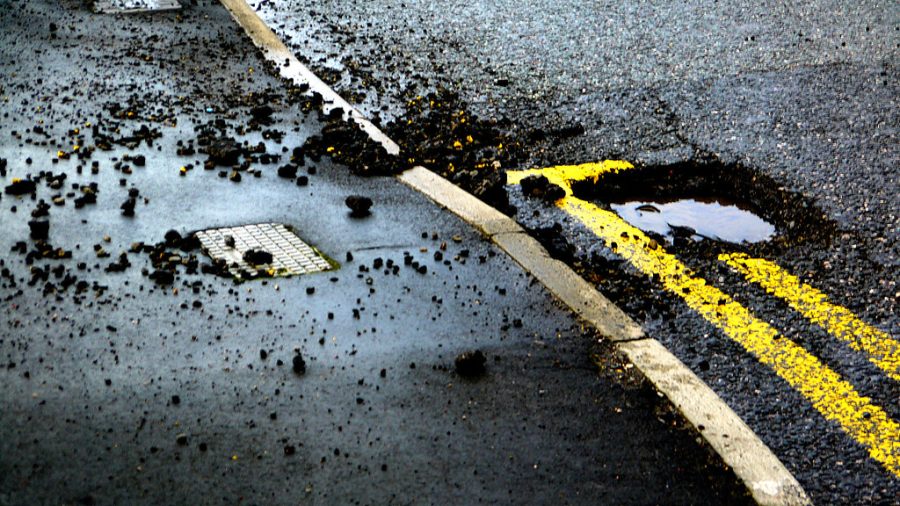America’s Dying Infrastructure
The country’s framework has stunted in recent decades, calling for urgent improvement.
“Pothole” by _chrisUK is licensed under CC BY-NC-ND 2.0.
If urgent action isn’t taken within American Infrastructure, roads and bridges have the risk of completely collapsing.
January 31, 2023
The USA has always been regarded as a hegemonic superpower, a country that is both politically and economically advanced and regarded highly on the global scale.
However, if there is one thing the US must improve, it is its aging and frankly deteriorating infrastructure.
In fact, more than 45,000 U.S. bridges and one in five miles of roads are in poor condition. It doesn’t stop there: leaking lead pipes have caused irreversible effects on human health, unsafe roadways have caused thousands of deaths, and poor public transportation has caused irreversible climate change.
Although there are countless problems that are eating away at American infrastructure, one of the most immediate is public transportation. Around 70% of commuters primarily travel via car between destinations, a stark difference from the mere 11% that travel mainly using public transportation.
The reason for this uneven distribution is simple: US public transportation infrastructure is outdated and often unusable.
One of the leading problems with poor infrastructure is its ripple effect, one that is hard to spot on the surface level but is exemplified by bad infrastructure’s economic burden.
Poor infrastructure has debilitating effects on an economy, as low-quality infrastructure can stunt economic growth and limit productivity. The infrastructure shortfall over the next 20 years will be nearly $13 trillion USD. The reality is that if the effects are drastic today, the long-term economic effects will be even more drastic.
The lack of advancement within American infrastructure is especially obvious in comparison to first-world countries. The US ranks 13th in terms of infrastructure,compared to international competitors and other developed countries. This can be heavily attributed to what percentage of a country’s GDP is spent on infrastructure. For example, while European countries spend five percent of their GDP on average for infrastructure improvements, the US spends only 2.4% of its GDP on infrastructure.
If people continue to predominantly use cars that emit fossil fuels, climate change surges. Gas-powered cars are one of the biggest contributors to the human carbon footprint, and if people aren’t incentivized to take public transportation soon, the effects could be irreversible and even deadly to the planet’s health.
What comes into question is the true root of the problem. Surely, there isn’t a single cause just like there isn’t a simple solution to the issue. However, one of the biggest and most credible comes down to infrastructure funding on the national level. In fact, public funding for infrastructure has tanked in recent years, specifically by 40%. It is clear that the funding gap for infrastructure is one of the largest contributors to its downfall. Plus, this conclusion is generally agreed upon by the general public. According to the people residing in the US, a lack of public funding is the key reason that civil infrastructure is failing to keep pace with society’s demands.
Without improving America’s infrastructure, human lives come into question, and that is a dangerous line to cross. Not only that, but bad infrastructure is statistically proven to provide an extensive economic burden. The US is one step behind competitors on the global level. It is clear that steps need to be taken sooner than most people think.











